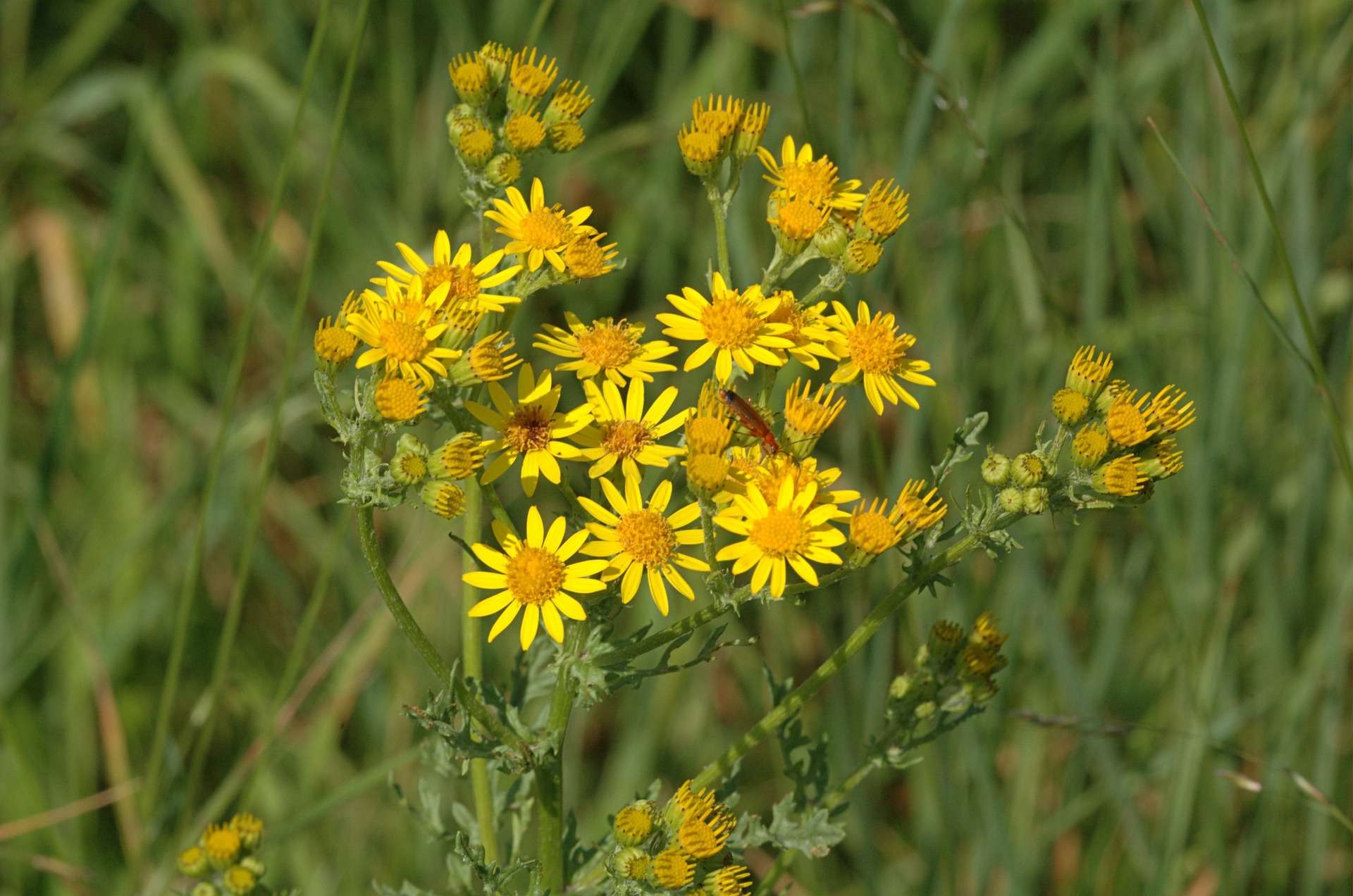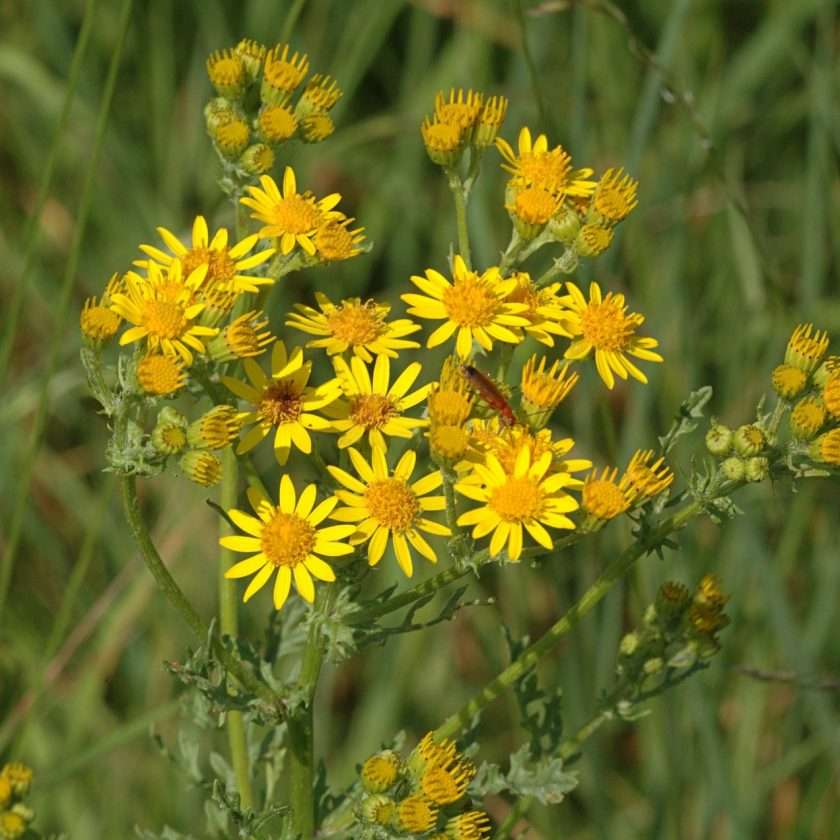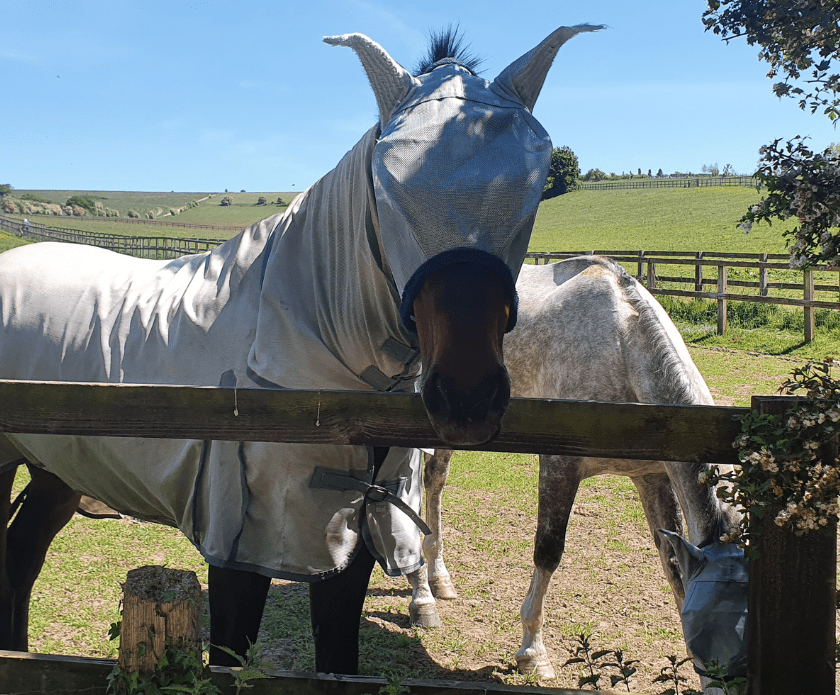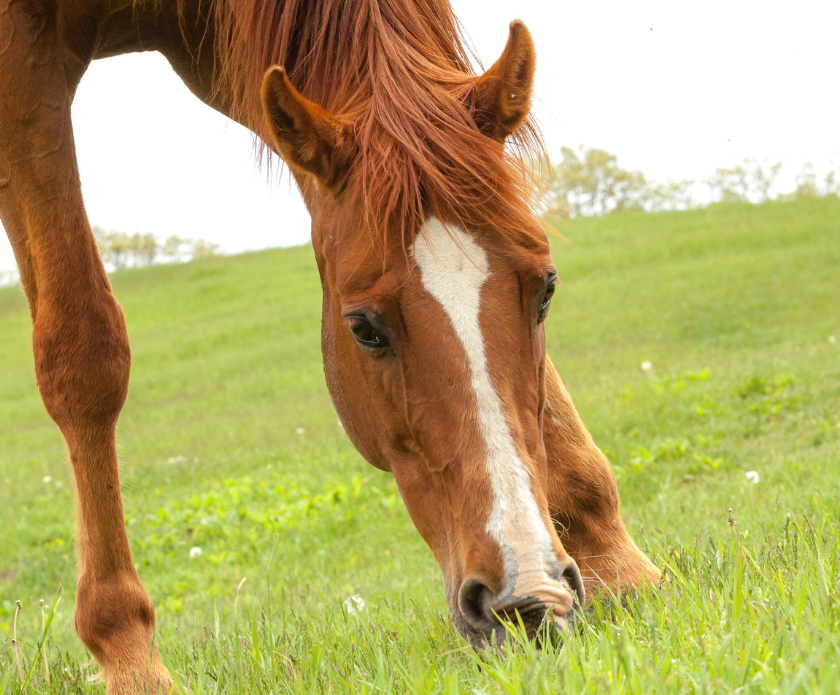Ragwort poisoning in horses is a very real threat to equine health. The damage caused by the ingestion of ragwort can lead to long-term health effects on horses and, in some cases, can prove fatal.
What is Ragwort?
Ragwort is a widespread weed recognised by its bright yellow flowers (flowering from June-November). It’s often seen growing in equine paddocks, on rough land and on roadside verges. It can also be found on pasture that is particularly overgrazed, or in ‘starvation’ paddocks.
When it is growing, it is unpalatable to horses, but when wilted or dried in hay, it loses its bitter taste and will readily be eaten, but unfortunately, it retains its toxic properties.
Toxins in ragwort
The toxins in ragwort damage the horse’s liver; signs are often only seen months or years after the plants were eaten.
The liver can continue to function normally until at least half of it is damaged, which means that damage is often advanced before signs are seen.

Clinical signs of ragwort poisoning
Low levels can cause toxicity over a long period of time, and there can be a delay of months or years from exposure to ragwort before the signs develop.
The signs of liver damage are varied and are often non-specific but include:
- Jaundice (yellow discolouration of the gums and eyes)
- Depression
- Weight loss and poor appetite
- Low-grade colic
- Oedema (fluid retention in the legs and under the belly)
- Photosensitisation (the pink areas of the skin can become red and blistered with normal levels of light)
- Behavioural signs such as disorientation, circling, repeated yawning and pressing the head against the wall
- Increased thirst
- Bleeding disorders
Many of these signs are caused by the liver’s failure to detoxify the natural by-products of digestion and metabolism.
Diagnosis of ragwort poisoning
A vet will offer a diagnosis of ragwort poisoning. This may be when the horse or pony has symptoms, and can be done a number of ways:
- Blood samples can show indicators of liver damage and reduced liver function.
- Diagnosis can be confirmed with an ultrasound scan and liver biopsy
Key ‘take-away’ points:
- Prevention is far better than cure; toxin accumulates after low-level ingestion over months or years;
- The plant is usually unpalatable but palatability increases when cut or dried;
- Either spray or pull up and burn all ragwort on the pasture;
- Purchase hay/haylage from reliable sources.
Treatment of ragwort poisoning
If a horse or pony is suffering from ragwort poisoning, there are a number of ways to treat it. Sadly, no specific treatment or antidote will cure the disease or reverse the damage to the liver; therefore, any treatment is aimed at minimising the work of the liver.
The following points should be considered:
- The horse may respond to treatment if diagnosed early.
- The diet can be altered to contain low but adequate levels of good quality, easily digestible protein to prevent the overproduction of ammonia.
- A good diet for most cases is a combination of two parts sugar beet to one part maize or barley fed in six small meals daily plus adlib grass or hay.
- Dietary vitamin supplementation can help to support the liver but care must be taken because high levels of iron, vitamin A, niacin, valerian and comfrey can all further damage the liver.
- Milk thistle has been shown to support liver function.
Prevention of ragwort poisoning
Various measures can be taken to prevent ragwort poisoning. Landowners or horse owners can take these procedures that are vital not only for the horse’s health, but for good pasture management.
- Ragwort should be removed from the pasture prior to seeding to prevent the spread of the plants.
- Plants are best dug out, or levered out using a specially designed fork and removed and burned.
- The toxins can be absorbed through human skin, so gloves must be worn whenever handling the plants.
- Broad leaf herbicides can be used but avoid making hay for one month after use to allow plant to die fully
- Make every attempt to ensure that the source of hay or haylage used does not contain ragwort
- Grazing with sheep may help as they are less susceptible and will graze off the young shoots in spring
- Good grassland management can help
- Routine blood screens can provide an early warning of disease
For further information on ragwort poisoning, please contact your local XLEquine veterinary practice or visit xlequine.






Comments are closed.